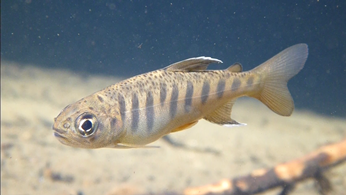Viable Salmonid Population Concept
The California Monitoring Plan (CMP) uses the Viable Salmonid Population (VSP) concept as the framework to assess salmonid viability in terms of four key population characteristics: abundance, productivity, spatial structure, and diversity.
- High abundance buffers a population against both ‘normal’ and catastrophic variation due to environmental conditions and loss due to anthropogenic factors.
- High productivity will lead to more certain replacement when populations are placed under either natural or anthropogenic stress.
- Wide spatial structure (existing across a greater geographic area) reduces extinction risk due to catastrophic events and provides pathways for recolonization.
- Diversity in life history traits (e.g., time of spawning, juvenile life history, adult fish size, age structure, degree of anadromy, etc.) provides resilience against extinction risk from changing conditions.
Data Summaries
 Juvenile Coho Salmon(CDFW photo by Derek Acomb)
Juvenile Coho Salmon(CDFW photo by Derek Acomb)
CDFW publishes population metrics for state- and federally-listed anadromous salmonids in the CMP Population Data annually. The published data and related information are available at the links below.